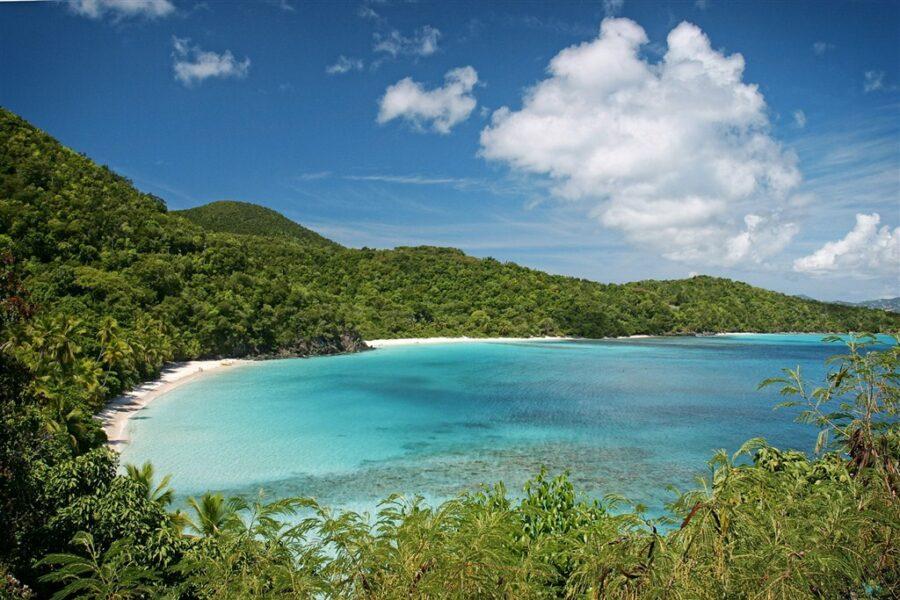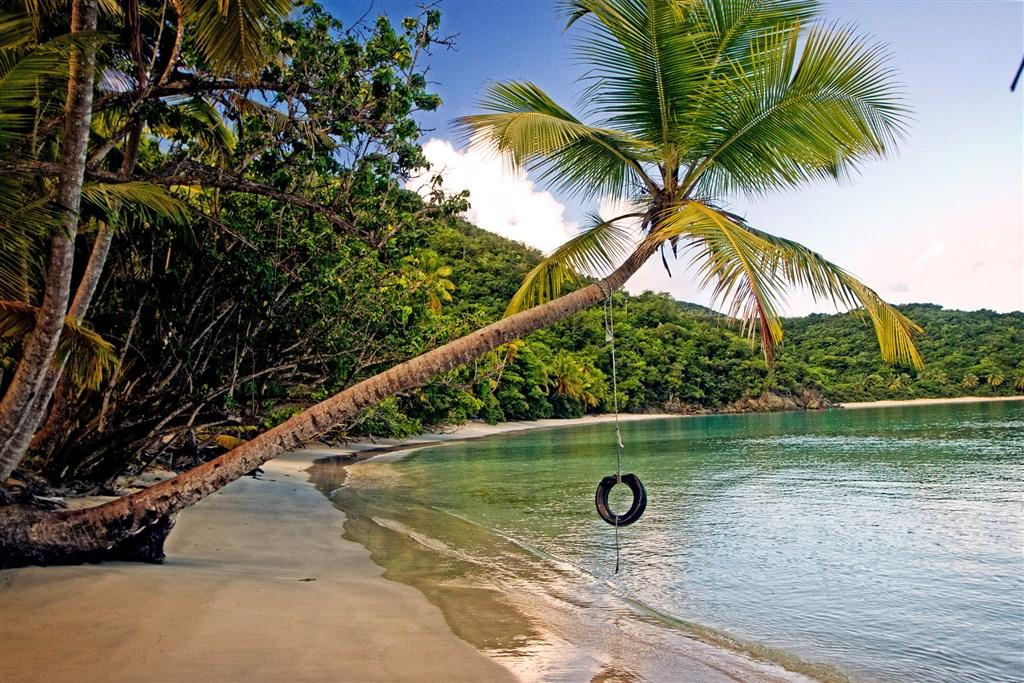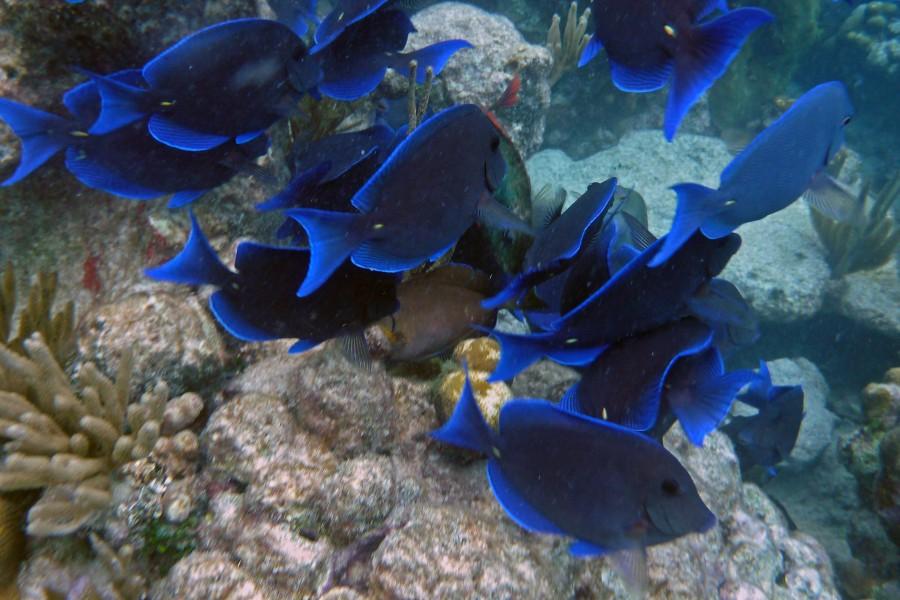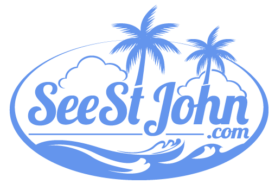There is nothing formal about Gibney Beach. There is no sign, no parking lot, and no facilities. It used to be a private beach with no public land access, and although this has recently changed, the beach still retains much of that private feeling. It’s named after the Gibney Family, which owns the property around the beach. Snorkeling for all skill levels is a great experience here, as with the other Hawksnest Bay beaches.
How To Get To Gibney Beach

Gibney Beach is 0.3 mile east of Hawksnest Beach or 2.1 miles east of Mongoose Junction on Route 20. The entrance to the beach is through the third driveway on your left after passing Hawksnest Beach. Limited parking is available in places where you can pull your vehicle completely off the road. Gibney Beach at the eastern end of the bay.
Enter the driveway through the door in the iron gate and walk down the driveway to the shore. The renovated structure at the bottom of the driveway on the right is the former Oppenheimer home, which is now a community center.
The area in front of the community center is sometimes referred to as Oppenheimer Beach, while the longer and wider southwestern part is known as Gibney Beach. They are both geographically the same beach, with names that have been changing and evolving over time.
Remember that on St. John, as well as in the rest of the US Virgin Islands, the area from the sea to the line of first vegetation is public domain. Behind the line of first vegetation, though, maybe private property, as is the property behind Gibney Beach, which belongs to the Gibney family.
Gibney Beach has served as the location for numerous commercials and magazine articles as well as several major motion pictures, including “The Four Seasons” and “Columbus.”
Hawksnest Bay has three other beaches you can visit if you want to explore several options while here. You can go to Caneel Hawksnest, formerly known as Sheep Dock, which is part of the Caneel Bay Resort.
There is also Hawksnest, the National Park beach, replete with parking facilities, picnic tables, barbecues, covered pavilions, changing areas, and bathrooms. Then Little Hawksnest, which lies just west of Hawksnest.

Gibney Beach Snorkeling
Snorkeling is best from the Oppenheimer section of the beach. The entry into the water is on soft sand, and the snorkeling environment is suitable for beginners.
Right off the Community Center (the old Oppenheimer house) is a shallow reef, which occasionally breaks through the surface of the water. Much of this reef was negatively impacted when heavy rain occurred during the excavation for the Myrah Keating Smith Clinic.
Tons of earth was washed down into Hawksnest Bay, and the resulting turbidity damaged much of the coral. Today the reefs are coming back to life, and you can find some colorful elkhorn and boulder coral, along with fire coral. Schools of small fish, such as goatfish, grunt, and tang, can commonly be seen in the area.

A narrow fringing reef runs along the eastern coastline. Close to the beach is a section of beautiful brain coral. The reef here is colorful, and there is an abundance of small and medium size fish.
Look for parrotfish, angelfish, squirrelfish, trunkfish, and trumpetfish. Also, observe the predators such as yellowtail snapper and blue runners prowling the reef edges on the lookout for fry and other small prey.
More experienced snorkelers can continue along this eastern coast to the point and around Perkins Cay and Denis Bay. Along the way is a small beach where you can stop and rest. Just before you come to this pocket beach, you may see the remains of a sunken sailboat.
As you progress northward along the coast, you will encounter scattered areas of colorful coral, sponges, fish, and other marine life in depths of about six to ten feet. Summer is the best time to snorkle in Gibney Beach when there are no ground seas to churn up the water.
